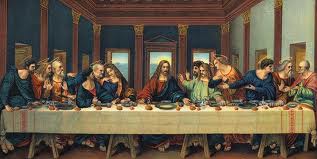When Leonardo da Vinci was painting the famous Last Supper at the end of the 15th century, he was looking for thirteen faces to paint Jesus and his 12 disciples. Inspired by the faces of different people from Milan, he portrayed one after the other until only two heads were missing on the long table: The head of the betrayer Judas and the head from the redeemer Jesus. Now, da Vinci faced the difficulty of painting the good in Jesus Christ’s portrait, and the bad in the figure of Judas, who betrayed Jesus during the meal.
Da Vinci found the perfect model for the figure of Jesus in a young man in a cathedral while hearing a choral. The young man’s face radiated a translucent, almost otherworldly purity and had all the features of kindness and goodness that were needed to inspire the representation of the figure of Jesus. However, da Vinci could not finish the painting because he did not find a suitable model to portray Judas’ face, and many years went by.
Years later, da Vinci found a man who had the required characteristics for the figure of Judas. It was a Milan man of middle age, with agonized features which mirrored the diremption of a betrayer’s soul, and which exemplified sin, degradation, nefariousness and despair.
The legend says that after finishing the painting, the model told the painter that he had already seen the picture before. “When?” asked da Vinci surprised. “Years ago, at a time when I was singing in church, I was invited to pose as model for the face of Jesus Christ” answered the model.
Like people, our homeopathic remedies have many faces. Their features, namely signs and symptoms, are listed in the Materia Medica from which the proving symptoms constitute the primary and most reliable source of symptoms. Among all the features are the strange, rare, peculiar and uncommon symptoms which are the key distinguishing features, and mostly help us in identifying the similarity between the symptoms of the patient and remedy. Yet, the practitioner often needs to make reference to other symptoms for finding the indicated remedy.
Over time the Materia Medica has been subject to many additions, some from unreliable and questionable sources, and it remains incomplete for only partially proven remedies. This hampers our work of studying, identifying and differentiating remedies and endangers the success of treatment, which depends on the availability of reliable working tools.
In this month’s ezine we have compiled a variety of articles on the Homeopathic Materia Medica and Symptoms to discuss and clarify related problems. Enjoy these and our other articles, and let us know your comments at: [email protected]
Take part in Hpathy’s first international Homeopathy Short Story Contest. Win prizes and make history!!
Katja Schütt
Editor Homeopathy for Everyone





Dear Katja, thank you very much for sharing such a beautiful story. I believe there is much more to learn from that story.
Yes, Paulo, you are right 🙂
Katja
Thanks Katja Schutt,
This is good pic and history.
Greetings Katja
A great Methaphor,for observation………..thank you
Many “like” Katja.
Thanks for sharing this history.
Good story mem
thanks for such a nice story.i enjoy it